5.7: My Food Mood Connection
- Page ID
- 14090
\( \newcommand{\vecs}[1]{\overset { \scriptstyle \rightharpoonup} {\mathbf{#1}} } \)
\( \newcommand{\vecd}[1]{\overset{-\!-\!\rightharpoonup}{\vphantom{a}\smash {#1}}} \)
\( \newcommand{\id}{\mathrm{id}}\) \( \newcommand{\Span}{\mathrm{span}}\)
( \newcommand{\kernel}{\mathrm{null}\,}\) \( \newcommand{\range}{\mathrm{range}\,}\)
\( \newcommand{\RealPart}{\mathrm{Re}}\) \( \newcommand{\ImaginaryPart}{\mathrm{Im}}\)
\( \newcommand{\Argument}{\mathrm{Arg}}\) \( \newcommand{\norm}[1]{\| #1 \|}\)
\( \newcommand{\inner}[2]{\langle #1, #2 \rangle}\)
\( \newcommand{\Span}{\mathrm{span}}\)
\( \newcommand{\id}{\mathrm{id}}\)
\( \newcommand{\Span}{\mathrm{span}}\)
\( \newcommand{\kernel}{\mathrm{null}\,}\)
\( \newcommand{\range}{\mathrm{range}\,}\)
\( \newcommand{\RealPart}{\mathrm{Re}}\)
\( \newcommand{\ImaginaryPart}{\mathrm{Im}}\)
\( \newcommand{\Argument}{\mathrm{Arg}}\)
\( \newcommand{\norm}[1]{\| #1 \|}\)
\( \newcommand{\inner}[2]{\langle #1, #2 \rangle}\)
\( \newcommand{\Span}{\mathrm{span}}\) \( \newcommand{\AA}{\unicode[.8,0]{x212B}}\)
\( \newcommand{\vectorA}[1]{\vec{#1}} % arrow\)
\( \newcommand{\vectorAt}[1]{\vec{\text{#1}}} % arrow\)
\( \newcommand{\vectorB}[1]{\overset { \scriptstyle \rightharpoonup} {\mathbf{#1}} } \)
\( \newcommand{\vectorC}[1]{\textbf{#1}} \)
\( \newcommand{\vectorD}[1]{\overrightarrow{#1}} \)
\( \newcommand{\vectorDt}[1]{\overrightarrow{\text{#1}}} \)
\( \newcommand{\vectE}[1]{\overset{-\!-\!\rightharpoonup}{\vphantom{a}\smash{\mathbf {#1}}}} \)
\( \newcommand{\vecs}[1]{\overset { \scriptstyle \rightharpoonup} {\mathbf{#1}} } \)
\( \newcommand{\vecd}[1]{\overset{-\!-\!\rightharpoonup}{\vphantom{a}\smash {#1}}} \)
\(\newcommand{\avec}{\mathbf a}\) \(\newcommand{\bvec}{\mathbf b}\) \(\newcommand{\cvec}{\mathbf c}\) \(\newcommand{\dvec}{\mathbf d}\) \(\newcommand{\dtil}{\widetilde{\mathbf d}}\) \(\newcommand{\evec}{\mathbf e}\) \(\newcommand{\fvec}{\mathbf f}\) \(\newcommand{\nvec}{\mathbf n}\) \(\newcommand{\pvec}{\mathbf p}\) \(\newcommand{\qvec}{\mathbf q}\) \(\newcommand{\svec}{\mathbf s}\) \(\newcommand{\tvec}{\mathbf t}\) \(\newcommand{\uvec}{\mathbf u}\) \(\newcommand{\vvec}{\mathbf v}\) \(\newcommand{\wvec}{\mathbf w}\) \(\newcommand{\xvec}{\mathbf x}\) \(\newcommand{\yvec}{\mathbf y}\) \(\newcommand{\zvec}{\mathbf z}\) \(\newcommand{\rvec}{\mathbf r}\) \(\newcommand{\mvec}{\mathbf m}\) \(\newcommand{\zerovec}{\mathbf 0}\) \(\newcommand{\onevec}{\mathbf 1}\) \(\newcommand{\real}{\mathbb R}\) \(\newcommand{\twovec}[2]{\left[\begin{array}{r}#1 \\ #2 \end{array}\right]}\) \(\newcommand{\ctwovec}[2]{\left[\begin{array}{c}#1 \\ #2 \end{array}\right]}\) \(\newcommand{\threevec}[3]{\left[\begin{array}{r}#1 \\ #2 \\ #3 \end{array}\right]}\) \(\newcommand{\cthreevec}[3]{\left[\begin{array}{c}#1 \\ #2 \\ #3 \end{array}\right]}\) \(\newcommand{\fourvec}[4]{\left[\begin{array}{r}#1 \\ #2 \\ #3 \\ #4 \end{array}\right]}\) \(\newcommand{\cfourvec}[4]{\left[\begin{array}{c}#1 \\ #2 \\ #3 \\ #4 \end{array}\right]}\) \(\newcommand{\fivevec}[5]{\left[\begin{array}{r}#1 \\ #2 \\ #3 \\ #4 \\ #5 \\ \end{array}\right]}\) \(\newcommand{\cfivevec}[5]{\left[\begin{array}{c}#1 \\ #2 \\ #3 \\ #4 \\ #5 \\ \end{array}\right]}\) \(\newcommand{\mattwo}[4]{\left[\begin{array}{rr}#1 \amp #2 \\ #3 \amp #4 \\ \end{array}\right]}\) \(\newcommand{\laspan}[1]{\text{Span}\{#1\}}\) \(\newcommand{\bcal}{\cal B}\) \(\newcommand{\ccal}{\cal C}\) \(\newcommand{\scal}{\cal S}\) \(\newcommand{\wcal}{\cal W}\) \(\newcommand{\ecal}{\cal E}\) \(\newcommand{\coords}[2]{\left\{#1\right\}_{#2}}\) \(\newcommand{\gray}[1]{\color{gray}{#1}}\) \(\newcommand{\lgray}[1]{\color{lightgray}{#1}}\) \(\newcommand{\rank}{\operatorname{rank}}\) \(\newcommand{\row}{\text{Row}}\) \(\newcommand{\col}{\text{Col}}\) \(\renewcommand{\row}{\text{Row}}\) \(\newcommand{\nul}{\text{Nul}}\) \(\newcommand{\var}{\text{Var}}\) \(\newcommand{\corr}{\text{corr}}\) \(\newcommand{\len}[1]{\left|#1\right|}\) \(\newcommand{\bbar}{\overline{\bvec}}\) \(\newcommand{\bhat}{\widehat{\bvec}}\) \(\newcommand{\bperp}{\bvec^\perp}\) \(\newcommand{\xhat}{\widehat{\xvec}}\) \(\newcommand{\vhat}{\widehat{\vvec}}\) \(\newcommand{\uhat}{\widehat{\uvec}}\) \(\newcommand{\what}{\widehat{\wvec}}\) \(\newcommand{\Sighat}{\widehat{\Sigma}}\) \(\newcommand{\lt}{<}\) \(\newcommand{\gt}{>}\) \(\newcommand{\amp}{&}\) \(\definecolor{fillinmathshade}{gray}{0.9}\)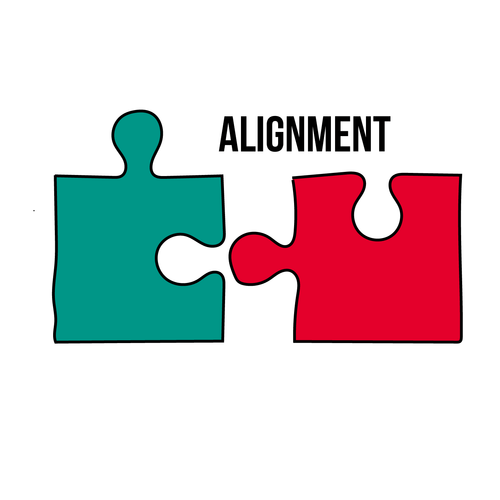
National Health Education Standards (NHES)
- 1.12.2 Describe the interrelationships of emotional, intellectual, physical and social health when discussing how foods affect our bodies and minds.
- 7.12.2 Demonstrate a variety of healthy practices and behaviors, such as consuming foods that positively affect us, that will maintain or improve the health of self and others.
Wellness Guidelines
- Increase fruit and vegetable consumption
- Decrease fast food consumption
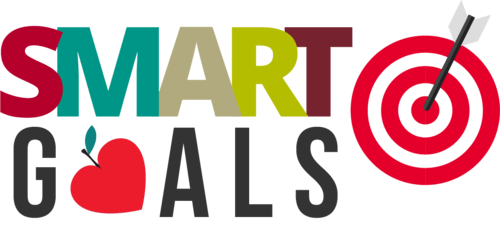
SMART Goal
- Instruction: In a group or think pair share format, have participants discuss the following questions. Acknowledge those who have progressed toward their goal(s) and encourage anyone who wants to change or modify their goal to get 1:1 support.
- Share: Let’s discuss our SMART Goals.
- How is it going with your current SMART goal?
- What are some ways you can improve progress toward your goal? (Grows)
- What are some ways you are doing well with progress towards your goal? (Glows)
GUIDELINE: Decrease Fast Food Consumption
- Share: What guideline do you think is related to today’s lesson? Who has a SMART Goal related to this guideline?
- Instruction: Select one activity.
- Guideline Popcorn: The group lists all 8 guidelines rapidly in popcorn format.
- Guideline Charades: Divide participants into groups and assign each a guideline. Each group has to silently act out the guideline for the rest to guess.
- Two Truths and One Lie:
- Truth 1: The foods we eat can affect our mood and mental health.
- Truth 2: A possible symptom of vitamin C deficiency is depression (NIH, 2018).
- Lie: Sugary foods have been shown to decrease stress.
- Share: When we feel stressed we seek foods that seem like they will comfort us immediately (like sugary foods). However, those foods often lead to surges and crash in hormones and blood that may actually lead to more stress.
- Questions to discuss and/or journal:
- Does your eating pattern change when you are stressed or in a bad mood? If so, how does it change?
- Does your eating pattern change when you are in a good mood? If so, how does it change?
- How do you feel after eating junk food?
- How do feel after eating healthier foods?
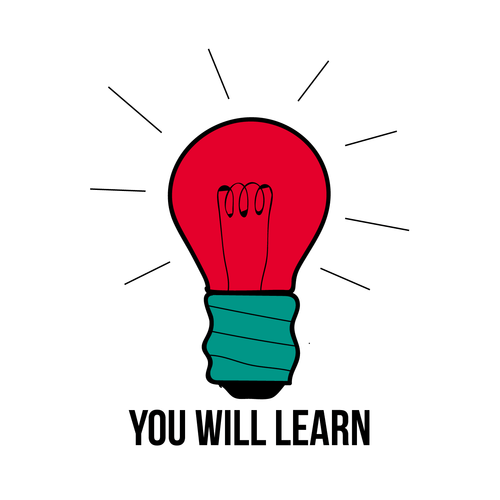
- How the food you eat can affect the moods you experience.
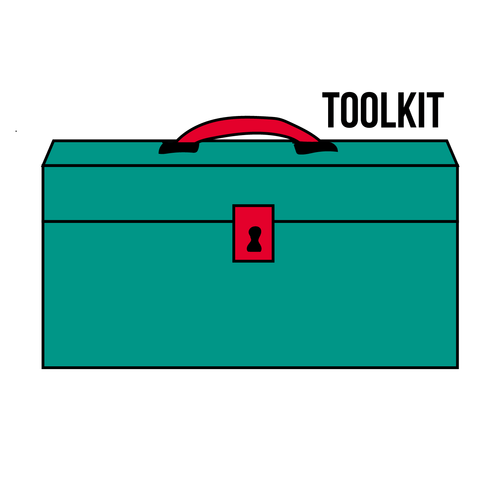
- Worksheets
- Slide presentation
- Healthy and unhealthy food props (items or pictures)
- Jeopardy Board (handmade or created online)

[Merriam-Webster, n.d; Nguyen-Rodriguez et al., 2009]
- Emotional Eating: Eating in response to negative feelings (Nguyen-Rodriguez et al., 2009).
- Appetite: A physical desire for food.
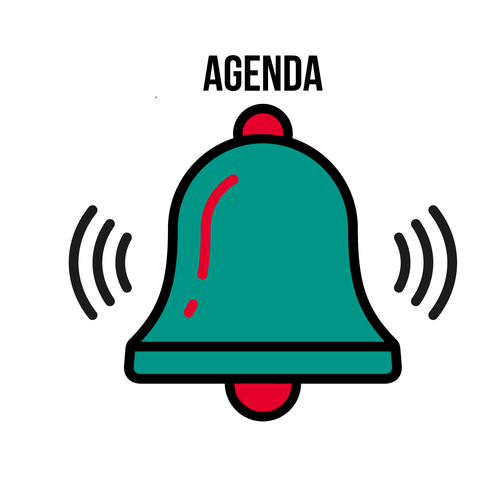
- Do Now
- Emotional Physical Hunger
- Food-Mood Jeopardy
- Exit Ticket
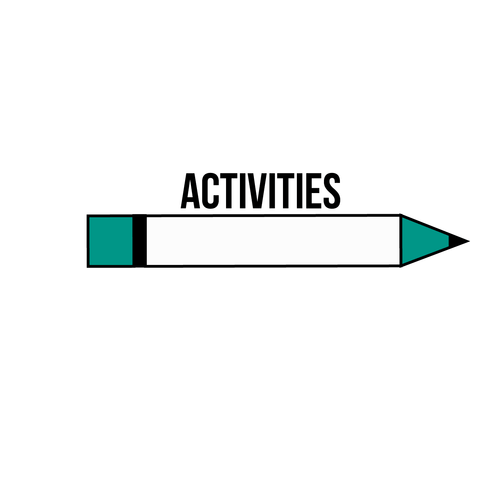
Do Now:
- Set Up:
- If possible, set up the room with chairs in a circle.
- Instruction:
- Hand each participant a food item or picture (healthy and not so healthy) as they each enter the classroom.
- Optional: Hand out the items or pictures to pairs or groups of students.
- Have participants split up into think-pair-share or small groups and answer the following questions.
- Is this food unhealthy or healthy?
- How do you feel after you’ve eaten this food?
- Examples:
|
Food |
Healthy or Unhealthy |
Mood |
|
Donut |
Unhealthy |
Sleepy |
|
Kale |
Healthy |
Energized |
|
Energy drink |
Unhealthy |
Hyper or irritable |
|
Apple |
Healthy |
Happy or full |
|
Coffee |
Unhealthy |
Irritable |
|
Quinoa or whole grain pasta |
Healthy |
Balanced |
|
Potato chips |
Unhealthy |
Guilty or sluggish |
Good to Know: Emotional vs. Physical Hunger
- Instruction:
- Divide participants into think-pair-share groups. Ask pairs to generate a list of WHY we eat certain foods.
- Discuss those answers with the class. Examples could include:
- The food tastes good
- The food is cheaper
- The food makes me full
- The food makes me feel good/healthy
- The food is a habit/tradition
- The food is usually served at parties, holiday gatherings, etc.
- The food is something I crave when I’m unhappy or stressed
- Share:
- Sometimes we eat because we are hungry (or to make ourselves full). But other times, we eat due to our emotions, which is called emotional eating.
- Emotional eating is eating in response to negative feelings (Nguyen-Rodriguez et al., 2009).
- Emotional eating can lead to unwanted weight gain and does not help you address the actual feeling/problem (CDC, 2015). As a result, it may even cause more stress!
- Instruction:
- Guide participants to see there are two main kinds of hunger: appetite and physical.
- Ask them to come up with a list of characteristics for each type of hunger. What is similar? What is different? Responses may include:
|
Emotional Hunger |
Physical Hunger |
|
Sudden onset (especially when one is distressed) |
Gradual onset |
|
Eat to feed feelings |
Eat to feed an empty stomach |
|
Crave specific foods |
No specific cravings |
|
Eats despite fullness |
Stops when full or satisfied |
Source:
- Nemours, Kid's Health. (2014). Emotional eating. Retrieved From: https://kidshealth.org/en/teens/emotional-eating.html
- Share:
- Common triggers for eating when not hungry include:
- Opening up the cabinet and seeing your favorite snack food.
- Sitting at home watching television.
- Before or after a stressful meeting or situation at work.
- Coming home after work and having no idea what's for dinner.
- Having someone offer you a dish they made "just for you!"
- Walking past a candy dish on the counter.
- Sitting in the break room beside the vending machine.
- Seeing a plate of doughnuts at the morning staff meeting.
- Swinging through your favorite drive-through every morning.
- Feeling bored or tired and thinking food might offer a pick-me-up (CDC, 2018).
- Common triggers for eating when not hungry include:
- Instruction:
- As an entire group, ask participants to generate a list of ways to combat emotional hunger. As participants share answers to the following questions, record on a board, projector or flipchart paper. Responses may include (NIH, n.d.):
- Exercise
- Reward yourself but not with food (e.g., a movie, music, a book, an act of self-kindness such as afternoon off from work or just an hour of quiet time away from family)
- Learning to self-observe your behavior, such as food intake, the servings sizes you’re eating for meals, amount of physical activity, etc.
- Not watching television while you eat
- Eating slowly will help you feel satisfied
- Eating lots of vegetables and fruits can make you feel fuller
- Share any responses not covered by participants.
- As an entire group, ask participants to generate a list of ways to combat emotional hunger. As participants share answers to the following questions, record on a board, projector or flipchart paper. Responses may include (NIH, n.d.):
Real World Relevance: Food-Mood Jeopardy
- Set Up:
- Refer to the slide presentations for the following jeopardy game.
- Categories are underlined, and answers are in italics.
- Foods that Create Energy
- 100: I am green and resemble a tree. (broccoli)
- 200: I swim upstream in cold water. (salmon)
- 300: Squirrels love me. (nuts)
- 400: I am a sweet root vegetable that can be eaten raw or cooked. (carrot)
- 500: I am a whole grain, most often associated with breakfast but also found in granola. (oats)
- Acronyms and Quotes about Food and Nutrition
- 100: An apple a day _________. (keeps the doctor away)
- 200: You are ______. (what you eat)
- 300: Quote from Hippocrates: Let food _____. (be thy medicine, be your medicine)
- 400: Food is the _______ of life. (spice)
- 500: S.A.D. (standard American diet)
- Faux Food- Mood Boosters
- 100: I get my sweet taste from corn. (high fructose corn syrup)
- 200: I have a long shelf life due to hydrogen. (partially hydrogenated vegetable oil)
- 300: I can be found in fast food and am used to bring out the flavor. (monosodium glutamate, or MSG)
- 400: I am often used as a substitute for butter. (margarine)
- 500: Plants or animals that have had their DNA modified. (genetically modified organisms)
- Is it Food or Mood?
- 100: I am your best friend in the morning, but I can also disrupt your sleep cycle. (caffeine)
- 200: I am an herb tea that can help you relax after a stressful day. (chamomile tea) (NIH, 2018)
- 300: Consuming large amounts of fruits or vegetables appear to reduce the chance of developing ______ and ______. (anxiety and depression) (Mihrshahi, et al., 2015; Lai, et al., 2013)
- 400: I am commonly found in foods, such as pumpkin seeds, red meat, and poultry. If you don’t get enough of me, it may make you mentally fatigued. (zinc) (NIH, 2018).
- 500: I am commonly found in foods, such as nuts, leafy vegetables, and dark chocolate. If you don’t get enough of me, it may increase your risk of migraine headaches. (magnesium) (NIH, 2018)
- Foods that Create Energy
- Instruction:
- Divide the group into teams of 4-5 participants and explain the rules of the game.
- Recommended rules:
- Pass out buzzers, bells or something to hold up like a sign to each team.
- Choose a team name and a team captain who will be responsible for answering the question on behalf of the team. The team can brainstorm together the answer.
- Answer in the form of a question. Example “What is January?” if a prompt was “The first month of the year”.
- Determine a time limit for answering the question such as one (1) minute.
- Each row must be completed before moving onto a higher value (all 100 questions must be completed before going to 200).
- Optional: Become a game show host - get dressed up to play the part!
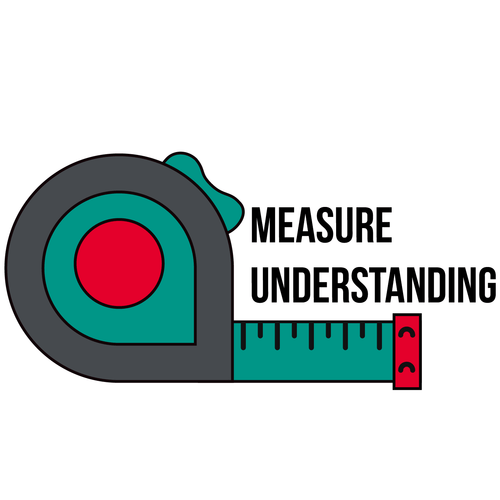
Exit Ticket:
- Instruction:
- Have participants write on their worksheet or share out loud the following question(s).
- Describe the link between food and your emotions. What is the relationship between the two, and how can this new knowledge help you live a healthier life?
- Think back to the foods that you were given during the Do Now. Would you choose that food to eat right now? Why or why not?
- Have participants write on their worksheet or share out loud the following question(s).
Bibliography
- Centers for Disease Control and Prevention. (2018). Eating habits. Retrieved From: https://www.cdc.gov/healthyweight/lo...ng_habits.html
- Lai, JS., et al. (2013). A systematic review and meta-analysis of dietary patterns and depression in community-dwelling adults. Americal Journal of Clinical Nutrition 99(1): 181-197.
- Nguyen-Rodriguez, ST., et al. (2009). Psychological Determinants of Emotional Eating in Adolescence. Eating Disorders 17(3): 211-223.
- Mihrshahi, S., et al. (2015). Fruit and vegetable consumption and prevalence and incidence of depressive symptoms in mid-age women: results from the Australian longitudinal study on women's health. Eur J Clin Nutr. 69(5):585-91.
- National Institutes of Health. (n.d.). Guide to Behavior Change. Retrieved From: https://www.nhlbi.nih.gov/health/edu...t/behavior.htm
- National Institutes of Health. (2018). Chamomile. Retrieved From: https://nccih.nih.gov/health/chamomile/ataglance.htm
- National Institutes of Health. (2018). Magnesium. Retrieved From: https://ods.od.nih.gov/factsheets/Magnesium-HealthProfessional/
- National Institutes of Health. (2018). Vitamin C. Retrieved From https://ods.od.nih.gov/factsheets/Vi...hProfessional/
- National Institutes of Health. (2018). Zinc. Retrieved From: https://ods.od.nih.gov/factsheets/Zinc-HealthProfessional/
- Nemours, Kid's Health. (2014). Emotional eating. Retrieved From: https://kidshealth.org/en/teens/emotional-eating.html
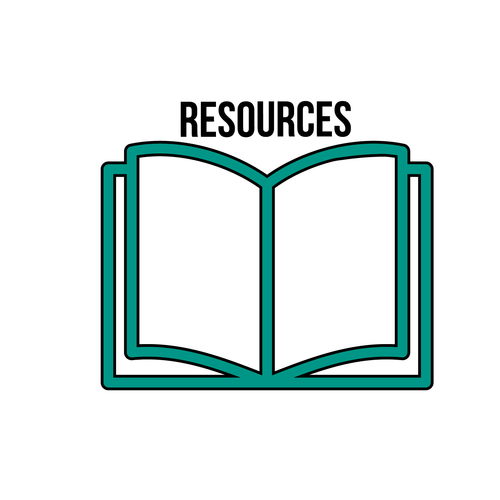
- TED-Ed. (2016). How the food you eat affects your brain – Mia Nacamulli. Retrieved From: https://www.youtube.com/watch?v=xyQY8a-ng6g
- TEDx Talks. (2015). Food for thought: How your belly controls your brain | Ruairi Robertson. Retrieved From: https://www.youtube.com/watch?v=awtmTJW9ic8
- Harvard Health Publishing. (n.d.). The food-mood connection. Retrieved From: https://www.health.harvard.edu/mind-and-mood/the-food-mood-connection
This lesson was created in partnership with Albert Einstein College of Medicine Department of Epidemiology and Population Health with funding support by the National Institutes of Health NIDDK Grant R01DK097096.

